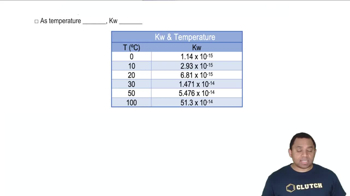Here are the essential concepts you must grasp in order to answer the question correctly.
Equilibrium Constant (K)
The equilibrium constant (K) is a numerical value that expresses the ratio of the concentrations of products to reactants at equilibrium for a given chemical reaction at a specific temperature. It provides insight into the extent of the reaction; a large K indicates that products are favored, while a small K suggests that reactants are favored.
Recommended video:
Le Chatelier's Principle
Le Chatelier's Principle states that if a dynamic equilibrium is disturbed by changing the conditions, the system will adjust itself to counteract the change and restore a new equilibrium. This principle helps predict how changes in concentration, pressure, or temperature will affect the position of equilibrium and, consequently, the value of K.
Recommended video:
Temperature Dependence of K
The equilibrium constant is temperature-dependent, meaning its value changes with temperature. For exothermic reactions, increasing temperature typically decreases K, while for endothermic reactions, increasing temperature increases K. Understanding this relationship is crucial for calculating K at different temperatures, such as the specified 25 °C.
Recommended video:
Kw Temperature Dependence
 Verified step by step guidance
Verified step by step guidance

